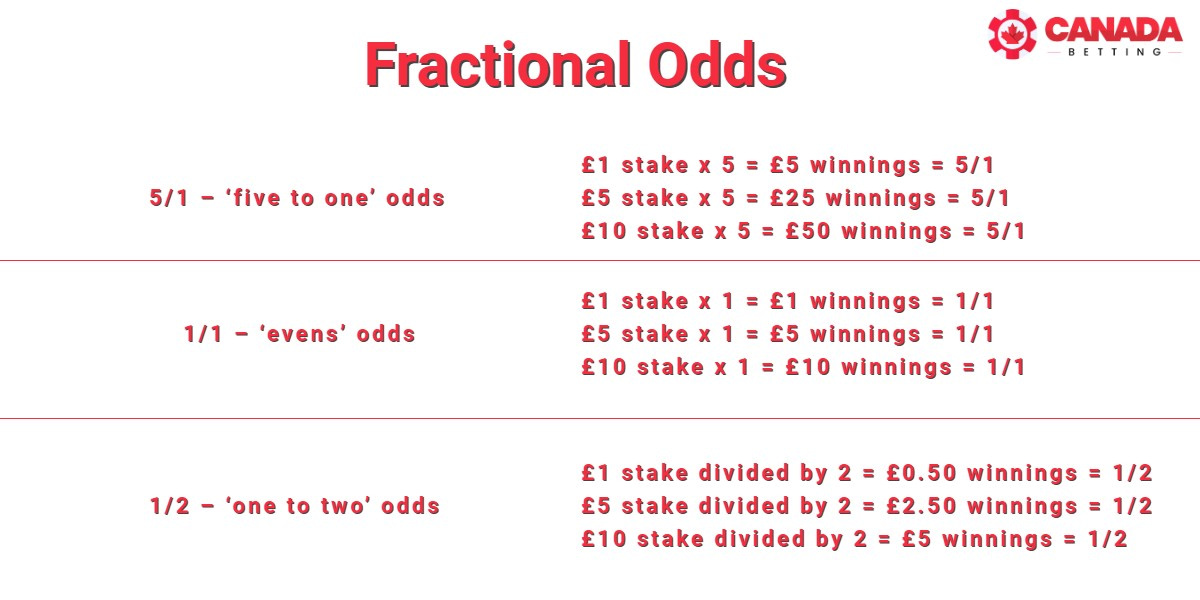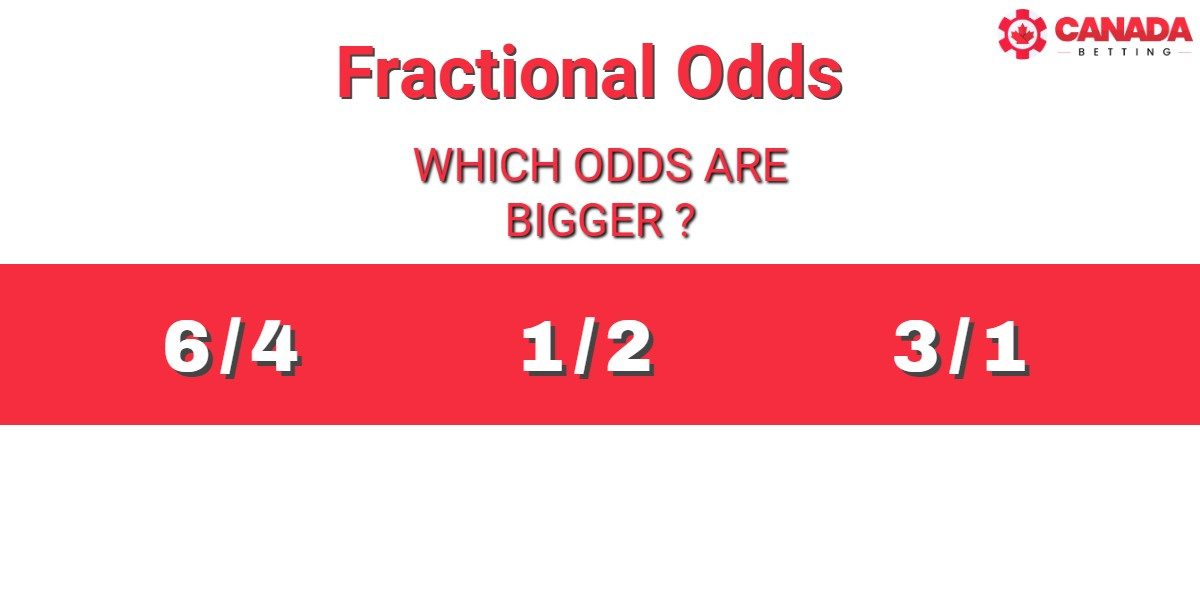An Introduction to Odds
If you are new to sports betting, the very first thing you need to learn is how betting odds work. Knowing what odds mean will help you predict how likely an event is to happen, as well as make a sound choice when placing a bet. It will also tell you how much you can potentially profit from a bet, which is why there is no betting without odds.
Since betting odds predict probability, they are directly affected by it. The higher the probability that an outcome will happen the lower the odds, and vice versa. Therefore, the more you risk with your bets, the more you have to potentially gain.
The Importance of Odds
Betting odds might appear daunting and too complicated to first-timers. The fact that different types of odds exist doesn’t help either. While it’s advisable to know as much as possible about all types of odds, you will most likely be using just one type most of the time. That makes the learning process a lot easier.
Betting odds are also important in order to understand how good and fair a certain sportsbook is. By comparing the odds from several sportsbooks, you will be able to choose the one with the best conditions. Sometimes the odds will be written differently on different sites, which is where converting odds from one type to another comes in very handy.
Key Concepts
Before starting to bet and learn about odds, it’s important to mention three key terms:
- Stake: This is the amount of money you decide to wager on your bet.
- Odds: This is the price you agree to wager your stake at.
- Payout: This shows the potential amount you can win from your bet if you have guessed the outcome correctly.

To gain an even better understanding of odds, let’s explain probability on an example of a simple dice. As you know, a dice has six sides marked one to six. Rolling a dice means there is a 1:6 probability for each possible outcome. So the probability of a dice landing with any number up is equal and totals 16.66%.
Now that we have the basics sorted out, let’s look at the odds in more detail and explain the different types of odds.
Did you know that the odds of Dwayne “The Rock” Johnson winning the 2020 US Presidential Elections is 100/1 on one popular betting website? That’s a 1% chance that he will become the next president of America — not great, not terrible.
If you are planning to start betting or you are already placing bets regularly, it’s a terrible idea to proceed unless you have a full grasp of betting odds. Betting with your heart is sometimes a good thing; relying on intuition can get you lucky, but not often.
However, having a complete understanding of odds means that you will always be betting with maths on your side, which gives you the highest probability of winning.
Understanding Betting Odds
As we have already mentioned, there are different types of odds out there. The three main types you should consider are:
- Fractional Odds
- Decimal Odds
- American Odds
You can probably guess that American odds are the most popular in the US. These are also called moneyline odds. Fractional odds are mostly used in the UK, whereas decimal odds are very popular in continental Europe.
In the following parts of the article, we will be focusing mainly on fractional and decimal odds. That’s because they are far more dominant on the betting scene and used by a large number of bettors around the world.
If you play in local land-based sportsbooks, you will probably encounter just one type of odds. However, if you prefer playing online, there’s a high chance that you will come across several different kinds. It’s important to understand that they are just a different way of showing the same thing. Therefore, they do not affect the payouts in any way, and one type of odds is no better than another one in that regard.
Fractional Betting Odds
Fractional odds are a traditional way of representing probability. They are also commonly known as UK odds or British odds because they are most popular among Irish and British bookies.
These odds are usually written using a slash or hyphen, which is pronounced “to”. For example, a wager with five to one odds can be written either “5/1” or “5-1” using the fractional method. These odds are used by some of the world’s biggest and most popular sportsbooks, which is why they are the most important to understand well.

So what do these numbers mean when you bet? Essentially, a wager with 5/1 odds means that you will win $5 for every $1 you bet. You will also get back the $1 you wagered. Therefore, this number shows you the potential profit but does not count the original stake as well, which makes your total return $6. Let’s take a look at a real-life example to make sure that everything is clear.
Take, for example, a hypothetical NBA game between the Sacramento Kings and Toronto Raptors. Let’s say that the odds of Sacramento winning this match are 6/1. You decide to back the Kings with a stake of $20 and wait for the outcome. If the Sacramento Kings win, you will win a profit of $120 (6 x 20). However, the full payout will be $140 because your original stake will be returned as well.
However, if you decide to bet on the Toronto Raptors to win, the odds will be 1/6. This means that for every $6 you bet, you will profit $1. Thus, if you bet $18 and the Raptors win, you will gain a $3 profit and receive a final $21 payout ($18 original bet + $3 profit).
Decimal Betting Odds
Decimal odds are the second odds in the hierarchy. They are used in various parts of the world, so they are also known as European odds, continental odds, digital odds, Australian odds, Canadian odds, and so on.
The advantage of decimal betting odds is that they are a bit easier to work with compared to fractional odds. You will instantly know who the favorite and who the underdog is when you look at the numbers.
As you can probably guess from their name, they use decimal numbers to represent the odds. The number you will see shows you the amount you will receive for every $1 you wager. Therefore, the main difference is that decimal odds represent the whole return (stake + profit) instead of just the profit.
That makes calculating the payouts much easier. All you need to do is multiply your stake by the value of the odds and that’s it. If you bet on multiple events, you just need to add the odds together and multiply the gross odd value by your stake.
Once again, let’s take a look at a real-life example. Imagine that Manchester United is playing against Tottenham next weekend. The odds of Manchester winning are 3.00, whereas the odds of Tottenham winning are 1.3.
Therefore, if you bet $10 on Manchester United to win, your total payout will be $30. On the other hand, if you bet $10 on Tottenham to win, your potential payout will be just $13.
To calculate your total profit, all you need to do is subtract your stake from the final payout. As you can see, this system is much simpler to use than the previous one.
Converting Fractional Odds to Decimal Odds
Converting fractional betting odds to decimal odds is definitely possible. However, if you play in online sportsbooks, you probably won’t need to do it. You can simply change your preference from one type of odds to another and the numbers will change automatically.
On the off chance that your favorite website does not support this feature, it’s good to know that you can convert odds on your own. In the beginning, you might struggle a bit, but as you get better you’ll likely be able to do it automatically in your head.
To turn fractional odds into decimal odds all you need to do is divide the left number by the right number and add 1, which will account for your stake.
Check out the following graphics to see how much easier decimal odds are:

Now let’s convert the Fractional Odds into Decimal Odds

It’s quite obvious that Decimal Odds are far easier to read and understand.
Let’s take 8/1 odds as an example.
8 ÷ 1 = 8
8 + 1 = 9
Thus, the decimal odds, in this case, are 9.00
Let’s check out several other examples to practice more.
- 3/1 odds: 3 ÷ 1 = 3; 3+1 = 4.00
- 6/4 odds: 6 ÷ 4 = 1.5; 1.5 + 1 = 2.5
- 1/2 odds: 1 ÷ 2 = 0.5; 0.5 + 1 = 1.5
If you are not very good at maths or you cannot be bothered to do this by yourself, there’s nothing to worry about. There are numerous “odds conversion” apps and sites you can use to calculate decimal odds from fractional, and vice versa. You can also use these sites and apps to convert American odds in case you prefer playing on American sites.
Using Betting Odds to Calculate Probability
To be successful in sports betting, you need to rely on luck, knowledge, and skill. It’s hard to control luck and make it work to your advantage. However, knowledge and skill are completely in your power.
By understanding the theory behind odds, you will be able to predict the probability of a certain outcome. For example, when it comes to decimal odds, the higher the number, the less likely it is for an outcome to happen.
We can use a formula to calculate probability in percentage from fractional and decimal odds. For fractional odds, what we need to do is divide the number on the right by the sum of both numbers. For example:
- 8/1 odds: 8 + 1 = 9; 1 ÷ 9 = 0.11. That means the probability is 11%.
- 6/3 odds: 6 + 3 = 9; 3 ÷ 9 = 0.33. That means the probability is 33%.
- 1/2 odds: 1 + 2 = 3; 2 ÷ 3 = 0.66. That means the probability is 66%.
For decimal odds, all we need to do is divide the number 1 by the value of the odd. For example:
- 5.00 odds: 1 ÷ 5 = 0.20. The probability is 20%.
- 1.50 odds: 1 ÷ 1.5 = 0.66. The probability is 66%.
However, betting odds are not always right. For example, at the beginning of his presidential campaign, Donald Trump had much worse odds than Hilary Clinton. As time went by, the odds started to change and, as we all know, Donald Trump became the president of the United States after the elections.
The odds you see are just a representation of what sportsbooks think will happen. They do not necessarily need to be right, and they are often not right. That is how you can profit from sports betting — by using knowledge or luck to make a better prediction than a certain sportsbook.
Conclusion
Now that we have covered the most important aspects of betting odds in detail, you should be well-equipped to start making better predictions. Remember that the odds you see on your favorite betting websites do not mean that something is bound to happen.
Thanks to the formulas we have shared with you, you will now be able to wager on all betting markets, regardless of the type of odds they use. You can easily convert them yourself, or you can use an automatic online converter that will do that instead of you.
Keep in mind that, in order to make a winning bet, you cannot rely only on odds. You need to have luck and plenty of knowledge as well.




